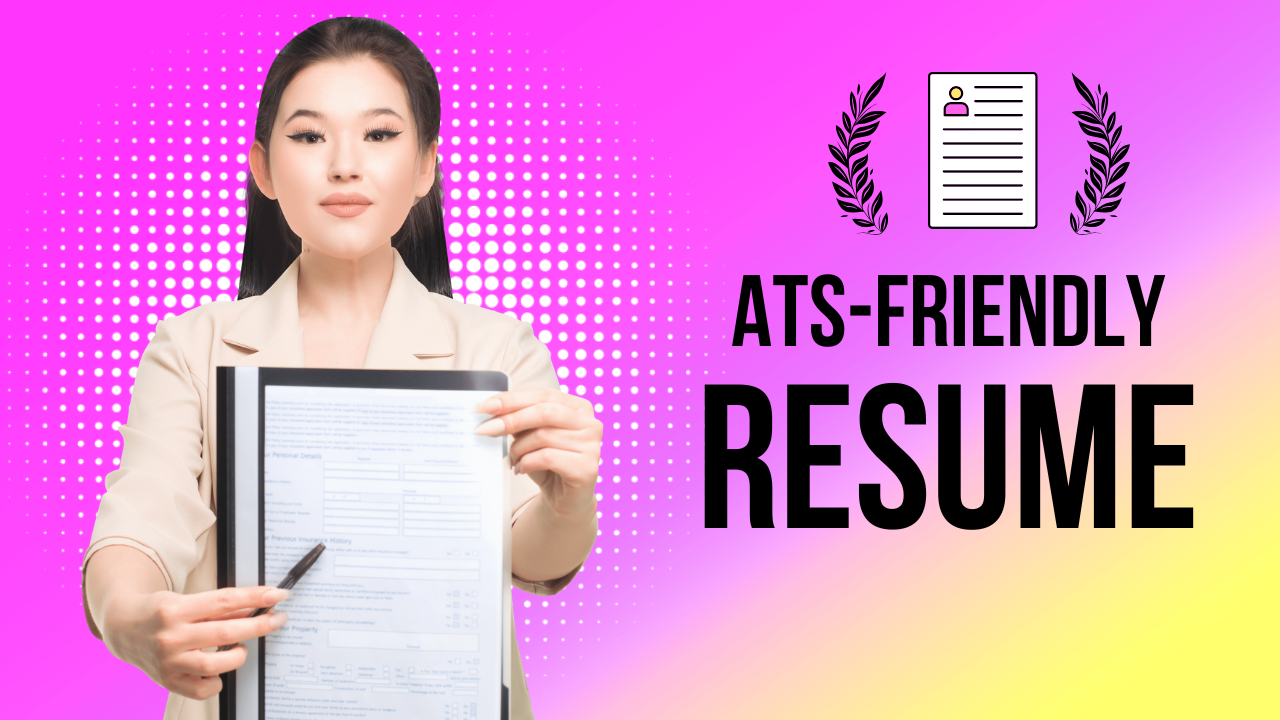Introduction: Why ATS Can Make or Break Your Job Search
Imagine spending hours perfecting your resume — only to have it rejected before a human even sees it.
This isn’t bad luck — it’s the result of Applicant Tracking Systems (ATS), the AI-powered software used by over 90% of employers in the UK and USA to filter resumes before they reach a recruiter.
ATS scans, ranks, and sometimes rejects resumes in seconds based on how well they match the job description. If your resume isn’t optimized for ATS, it might never make it to the interview stage — even if you’re the perfect candidate.
The good news? Creating an ATS-friendly resume is easier than you think — and once you do, you’ll increase your chances of getting noticed by 3× or more. In this complete guide, we’ll walk you through everything you need to know to beat the bots and land interviews
What Is an ATS and How Does It Work?
Applicant Tracking Systems (ATS) are software platforms companies use to manage, filter, and organize job applications. Instead of manually reading hundreds of resumes, recruiters rely on ATS to:
- Scan resumes for relevant keywords
- Rank applicants based on how well their resumes match the job description
- Filter out resumes with poor formatting or missing details
- Parse data into fields like “Education,” “Experience,” and “Skills”
If your resume isn’t ATS-friendly, it may be:
Misread or misformatted (causing data errors)
Rejected due to missing keywords
Ranked too low to ever reach a recruiter
Your goal is simple: Make your resume easy for ATS to read, understand, and rank highly.
Step 1: Use a Clean, ATS-Compatible Resume Format
One of the biggest reasons resumes fail ATS scans is complex design. While creative templates look nice to humans, ATS often can’t read graphics, tables, or unusual layouts.
Do This:
- Use a simple, reverse-chronological format (latest experience first)
- Stick to standard headings: “Work Experience,” “Education,” “Skills,” “Certifications”
- Use basic fonts like Arial, Calibri, or Times New Roman (10–12 pt)
- Save as .docx or .pdf (if the employer accepts PDF)
Avoid This:
- Fancy resume templates with columns, text boxes, or images
- Custom section names like “My Journey” instead of “Work Experience”
- Headers/footers — ATS often skips them
- Unreadable file formats (.jpg, .png, .odt)
- Keep your formatting linear — ATS reads resumes top to bottom, left to right.
Step 2: Use the Right Keywords Strategically
ATS systems scan resumes for keywords from the job description. If you don’t include them, your resume might never rank high enough to be seen.
How to Do It:
- Study the job posting – highlight recurring keywords and phrases.
- Add them naturally in your resume — especially in:
- Resume summary
- Skills section
- Work experience bullet points
- Use variations of keywords (e.g., “project management” and “managing projects”).
Example:
If the job posting mentions “CRM software” and “sales pipeline optimization,” your resume could include:
- “Managed B2B sales pipeline using CRM tools like Salesforce and HubSpot.”
- “Implemented CRM automation to increase lead conversion by 25%.”
Use at least 70–80% of the relevant keywords mentioned in the job listing.
Step 3: Write a Strong, Keyword-Rich Resume Summary
The resume summary is one of the first things both ATS and recruiters read. A strong summary should:
- Include your job title and years of experience
- Highlight 3–4 core skills that match the job posting
- Mention one or two measurable results
Example (ATS-Optimized Summary):
“Results-driven Marketing Manager with 8+ years of experience leading digital campaigns across B2B and B2C sectors. Skilled in SEO, Google Analytics, and CRM optimization. Increased lead generation by 40% year-over-year and improved conversion rates by 25%.”
Step 4: Optimize Your Skills Section for ATS
ATS often ranks candidates based on how many “skills” match the job description. A weak or vague skills section can cost you interviews.
Best Practices:
- Create a separate ‘Skills’ section
- Use industry-specific terms (e.g., “Python,” “Agile,” “Content Strategy”)
- Include both hard skills (technical abilities) and soft skills (communication, leadership)
Example (Skills Section):
Technical Skills: SEO, Google Ads, Salesforce CRM, Excel, Data Analysis
Soft Skills: Leadership, Cross-functional Collaboration, Time Management, Strategic Planning
Step 5: Use Action Verbs and Metrics in Your Experience Section
ATS gives extra weight to measurable achievements. Replace generic tasks with action verbs and quantifiable results.
Bad Example:
- “Responsible for managing a sales team.”
ATS-Optimized Example:
- “Led a 10-member sales team and increased revenue by 45% within 12 months.”
Step 6: Include Relevant Certifications and Education
ATS systems often filter candidates based on required degrees or certifications. Always list them clearly and consistently.
Example:
Education:
Master of Business Administration (MBA), University of Oxford, 2021
Certifications:
- Certified Project Management Professional (PMP)
- Google Analytics Certification
Place certifications near the top if they’re essential for the role.
Step 7: Tailor Each Resume to the Job Posting
A one-size-fits-all resume rarely beats ATS. Instead, create slightly different versions for different roles by adjusting:
- Keywords
- Summary
- Skills emphasis
- Achievements highlighted
Use job description language verbatim where appropriate — ATS prioritizes exact keyword matches.
Common ATS Resume Mistakes to Avoid
| Mistake | Why It Hurts Your Resume |
|---|---|
| Using images, charts, or tables | ATS often can’t read them |
| Overloading with keywords | Looks unnatural and may get flagged |
| Using abbreviations without full forms | ATS might not recognize them |
| Fancy file names like “John’s_Resume_V5” | Keep it simple: John-Smith-Resume.docx |
| Leaving out critical skills from job posting | ATS will rank you lower |
Pro Tips to Maximize ATS Success
- Match your job title to the posting (e.g., “Marketing Specialist” instead of “Brand Ninja”)
- Save your resume filename with your full name and job title (e.g.,
Jane-Doe-Data-Analyst.docx) - Keep total length 1–2 pages — ATS penalizes overly long resumes
- Use standard section headers: Experience, Education, Skills, Certifications
- Double-check spelling — ATS might skip misspelled keywords
Conclusion: Beat the Bots and Boost Your Interview Chances
The job market in 2025 is more competitive than ever — and getting past ATS is now the first battle you must win. The good news is that by following the strategies in this guide — using the right keywords, optimizing your formatting, showcasing measurable achievements, and tailoring every application — you’ll dramatically increase your chances of landing interviews.
Remember: An ATS-friendly resume isn’t just about beating a machine — it’s about clearly communicating your value to employers from the very first scan. Once you master that, the interview stage is yours to conquer.
How do I know that my resume is ATS-friendly?
Use free ATS-scanner tools online or upload your resume to a job portal. If keywords and sections align well with the job description, you’re likely ATS-compatible.
Can I use any template from Canva and word?
Avoid overly designed templates. Choose clean, single-column layouts without graphics or tables for best ATS results.

